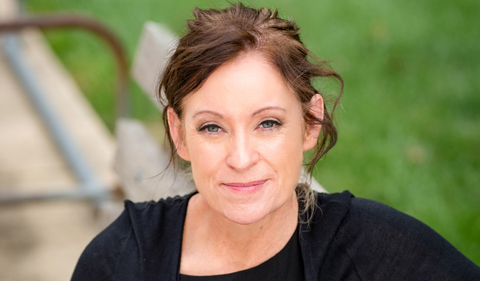Ohio University alum Pam Groen’s first job was at the Cincinnati Zoo, a position she leveraged from internships. Now she’s an independent laboratory consultant, helping start-ups, Nobel laureates and bio-tech companies find employees to staff their labs.
“I’m fortunate to be living in a time when the progression of next-generation sequencing, bioinformatics and ‘omics have converged in such a way to create significant opportunities for me to participate in exciting discoveries in health, disease, diagnostics, treatment, and research,” says Groen, owner of The Business of Science. She majored in Biological Science, pre-med, and Chemistry with a Mathematics minor.
Her career has focused on problem-solving, she says, from a life-saving patent that helped organ transplant recipients to increasing efficiency in the lab.
- Network and review your science resume with alumni including Groen at the 2019 Alumni-Student Networking Reception on Thursday, Jan. 31.
- Student RSVP (RSVP by Jan. 24 and get free personalized business cards.)
- Connect with Groen on LinkedIn.
Finding Significant Solution in the Small Details
“Complexity, impossibilities and the ‘unsolvable’ are the qualities that drew me into science,” Groen says. “Regardless of the magnitude of the challenge, the first step to a solution is to define the problem. As a recipient of several awards and patents, I am devoted to expanding the business of science.
“The breadth and scope of my scientific achievements extend to creating opportunities that leverage emerging scientific breakthroughs for clinical diagnostics, academic, research-based clinical trials for patient treatment and commercial laboratories, and to save money or meet the FDA’s rigorous requirements”.
“I’ve found that significant solutions happen when you have the tenacity to unearth improvements in the small details,” she says.
“The scale of scientific challenges drives me to leverage resources and empower teams. I’ve collaborated with leading scientists and Nobel laureates from around the world, and I am humbled by the talents and skills of people from all educational levels. I find ways to benefit from the team’s unique strengths within the laboratory environment.
“One of the reasons I was recognized by four national societies for contributions to the advancement of medical care is because my approach is that I’m not afraid to look at all the aspects of a problem. True solutions do not come from one single great idea—they are often painstakingly built from having the courage to look under the rocks to find the seemingly insignificant aspects and by taking the risk on a small improvement that results in a big impact.”
Beginning at the Zoo
Groen’s first “real world” job was as a laboratory technician for the Center for Reproduction of Endangered Wildlife, at the Cincinnati Zoo and Botanical Gardens.
“I took every internship possible, all were unpaid, at a couple different zoos,” she notes. “I did the jobs no one wanted with my eye on the bigger picture.”
From there, I became the Department of Anatomic Pathology’s director of operations at Cincinnati Children’s Hospital Medical Center.
Saving Lives with Patent
“In my 18 years at CCHMC, I authored 36 scientific journal publications, of which 12 were received with the highest scientific journalism honor of having my work as their cover. I also had had 17 scientific abstracts. Additionally, I received the Harry B. Neustein Memorial Award for my contributions to medicine.”
Groen was awarded a medical patent, with several others that were patent pending. “Of the patents I received, one, in particular, stands out. The application of this patent reduced the deaths of solid organ transplants by more than 90 percent and has become the standard of care for all transplant patients globally.” She also became a founding member of the National Society of Inventors.
“As I developed my career, I began to see business and clinical best practices that could be applied to improve a lab’s efficiency and bring ideas and products to the patient. Regardless of the goal, whether it is diagnostic, academic, research-based or commercial, I took creativity and unconventional approaches to create improvements in all functional areas.
Improving Efficiency, Productivity
“With this approach, I was able to create an entirely new business entity that significantly impacted the hospital’s budget for multiple years. I am also proud that found a way to hire people with special needs by placing them in specific jobs within the lab that required their unique strengths. I saw a need that was never considered and filled it with the best employees.”
As the Director of Anatomic Pathology at the Ohio State Human Tissue Resource Network at the Wexner Medical Center, Groen automated processes and standardized workflows in each clinical area, increasing the lab’s revenue by 50 percent. “Simultaneously, these efforts improved patient care by cutting turn-around time for a patient’s diagnosis. I also advanced the care and treatment of patients by implementing the most advanced molecular technologies to create tests that never existed before,” she said.
her most recent work was serving as the Senior Director of Operations & Biorepository for the private company of Assurex Health GeneSight®, where she helped prepared for its purchase by Myriad Genetics, created savings through vendor negotiations, unified multiple facets of the business to keep the product in production without any disruptions, and identified lean processes that reduced costs per unit. “I also increased the scalability for testing capacity by 50 percent by utilizing the current staff, to reach more than 2,000 units per day, double the capacity. Most importantly, I spearheaded the development of the world’s only biorepository of psychotropic samples.
“Today, I own a company and work as a private consultant applying my expertise to assist in the development of laboratories,” she says.




















Comments